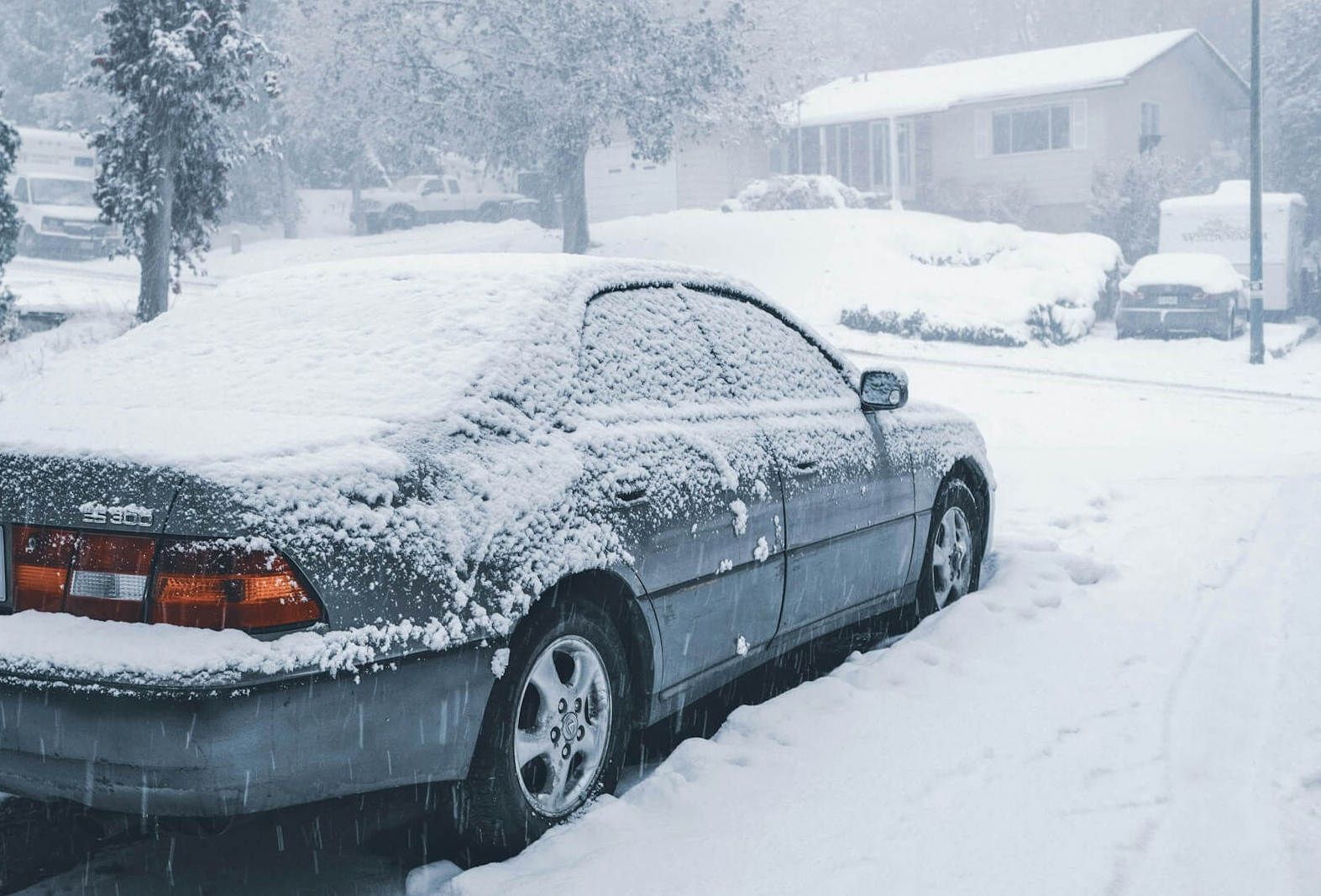Flashing Tire Pressure Light: Why It’s Blinking and What It Means
If your tire pressure light is flashing while driving through the Twin Cities this winter, you’re not alone. As temperatures drop, you might see that yellow horseshoe on your dash (sometimes flashing, sometimes solid) and wonder if it’s safe to keep driving. Whether you’re already on the road, pulled over, or just noticed it after parking, here’s what it means and what to do next.
Call us today to speak with a Lancer service advisor about your flashing tire pressure light.
Near Saint Paul? Stop by Lancer Service. We check tire pressures for free.
What Does a Flashing Tire Pressure Light Mean?
A flashing or blinking tire pressure light means your Tire Pressure Monitoring System (TPMS) isn’t communicating correctly with one or more sensors.
For most makes and models, a flashing light indicates a system fault.
Tire Pressure Light Blinking, Then Solid
If the tire pressure warning light flashes for 60–90 seconds and then stays solid, the TPMS has detected a fault. This is usually from a weak or dead TPMS sensor battery, a damaged or missing sensor, or a module error causing a poor signal. The system will not alert you accurately to low pressure until it’s repaired.
What to do: First, check and inflate all tires, including your spare, if needed. If pressure looks fine and the light stays on, schedule a TPMS diagnostic with LancerService. Your system may need a sensor reset or replacement.
Tire Pressure Light Blinking Intermittently
If the flashing tire pressure light comes and goes randomly while driving, it’s reacting to conditions rather than a permanent fault. This usually means borderline pressure changes from temperature swings or intermittent sensor communication due to a weak battery or interference.
What to do: Top off tires slightly above the door-label recommended tire pressure PSI on cold mornings. If flashing persists, have our auto repair technicians test your tire pressure sensors.
Solid Tire Pressure Light
A solid TPMS light (that comes on solid and stays solid) typically means at least one tire’s pressure is out of range. This is what the light is designed to signal when it’s working properly. This is often caused by a cold-weather pressure drop, a small puncture or slow leak, or sometimes over-inflation.
What to do: Check all tires for proper pressure and visible damage. Inflate or deflate as needed, and recheck once the tires warm up. If air levels are fine but the light remains, schedule a service to have the TPMS inspected.
Can I Drive With a Blinking Tire Pressure Light?
If your tire pressure is fine, you can drive short distances, but once the light flashes, your TPMS isn’t reliably monitoring pressure. That means you could lose air without warning. Pull off safely, inspect your tires, and check pressure before continuing. Schedule an appointment with your service center soon to restore the system’s protection.
Why Is My Tire Pressure Light Blinking? Common Causes
If your tire pressure light is flashing instead of staying solid, it means the Tire Pressure Monitoring System itself has an issue – not the air in your tires. The most common causes of a TPMS system fault are aging TPMS sensors or modules, or weak batteries made worse by cold weather.
Aging Sensors
Each TPMS sensor has a non-replaceable internal battery lasting 5–10 years. A weak battery or a failed sensor is the most common cause of a flashing light. To fix it, have your auto repair shop perform a TPMS diagnostic to identify and replace the faulty tire pressure sensor.
Cold Air Pressure Drops
Extreme cold can affect how aging TPMS sensors communicate. If the batteries are weak, low temperatures may make them perform worse, causing temporary misreads or delayed updates that trigger a flashing light.

What to Do When Your TPMS Light is Flashing
If you’re behind the wheel right now, stay calm. Follow these quick steps:
- Pull Over Safely and Inspect Your Tires: Stop somewhere safe with good lighting. Look for visibly low tires, sidewall damage, or objects stuck in the tread. If a tire looks flat, change it or call for roadside help.
- Check Tire Pressure and Inflate as Needed: Use a reliable tire pressure gauge on cold tires. Add air to reach the PSI listed on your driver-side door jamb.
- Schedule a Diagnostic if the Light Keeps Flashing: If all pressures are right but the light keeps blinking, a sensor or module may need recalibration or replacement.
How Lancer Service Can Help
A flashing TPMS light doesn’t usually mean danger—but it does mean your car’s tire-safety system needs attention.
At Lancer Service in Saint Paul, we help Twin Cities drivers stay safe year-round with transparent, high-quality maintenance and diagnostics.
- Routine tire pressure checks and adjustments
- Sensor or system replacement when needed
- Same-day diagnostics to confirm the issue—no upselling, just facts
If your TPMS light comes on after a cold snap, it’s also a good time to check your tread and tire alignment—small issues there can trigger uneven wear and future warnings.
Book a Service with Lancer Service in Saint Paul, MN
We service all makes and models, stand behind our work with a 24-month/24,000-mile warranty, and only recommend what’s necessary.
- TPMS Diagnostic to identify flashing-light or sensor faults.
- Oil Change and 47-point inspection, which includes tire and fluid checks.
- Suspension Inspection if uneven wear or vibration accompanies the warning.
Winter driving in Minnesota can be unpredictable, but your tire pressure light doesn’t have to be.
At Lancer Service in Saint Paul, we keep your tires and TPMS working together so you can drive with confidence all season long.
TPMS Light Flashing FAQs
What is the TPMS light?
The Tire Pressure Monitoring System (TPMS) light is a built-in safety feature that alerts you when tire pressure drops or when the system detects a fault. It helps prevent unsafe driving and tire damage.
How do you reset a tire pressure monitoring system?
Many vehicles reset automatically after driving several miles with the correct pressure. Others require pressing a TPMS reset button or using the steering wheel or touchscreen menu. Check your Owner’s Manual for your model. If the light won’t reset, Lancer’s auto repair technicians can recalibrate or replace the faulty sensor.
How Long Do TPMS Sensors Last?
Typically 5–10 years, depending on driving conditions and climate.
Related Posts






